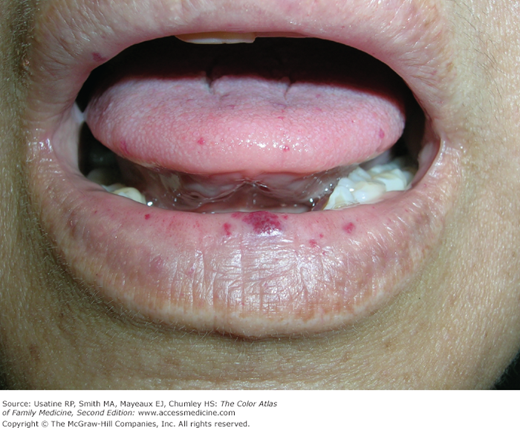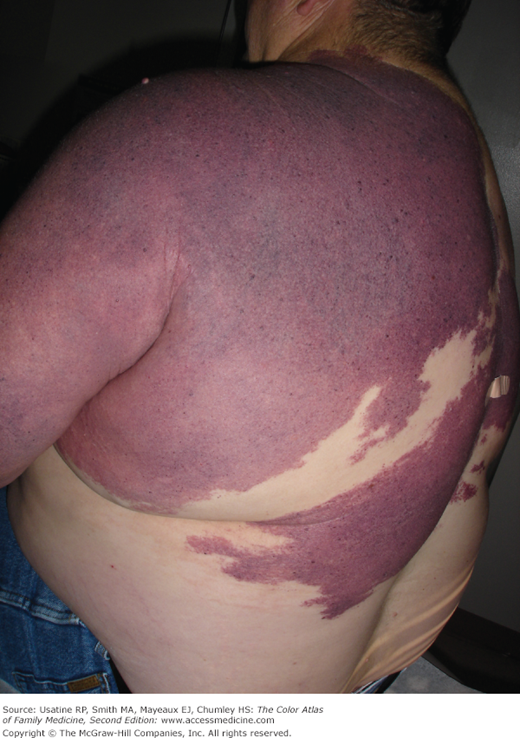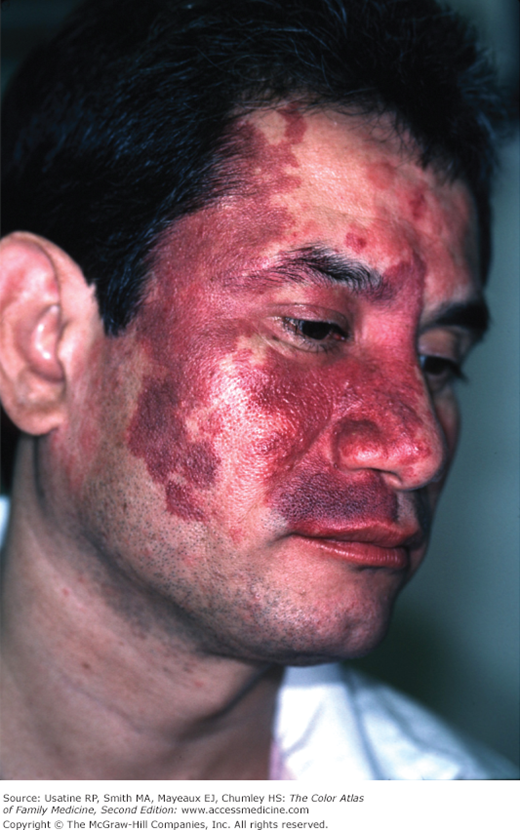Patient Story
A 56-year-old woman has had recurrent nosebleeds starting in childhood and has visible telangiectasias on her lips and tongue (Figure 202-1). In early adulthood, she was diagnosed with hereditary hemorrhagic telangiectasias (HHTs) (Osler-Weber-Rendu syndrome) and was found to have an arteriovenous malformation (AVM) in the lung requiring surgical resection. She has led a normal productive life and has two children who have not inherited this condition. Her mom had recurrent epistaxis, but never had an AVM.
Introduction
Epidemiology
- HHT is an autosomal-dominant vascular disorder that affects one in several thousands of people (Figure 202-1). Certain populations in Europe and the United States have a higher prevalence of this disease.1
- Nevus flammeus, or port-wine stains, are congenital vascular malformations that occur in 0.1% to 0.3% of infants as developmental anomalies. They persist into adulthood (Figure 202-2).2 They may be associated with rare syndromes such as Klippel-Trenaunay and Sturge-Weber syndromes (Figure 202-3).
- Maffucci syndrome is a rare, nonhereditary condition characterized by hemangiomas and enchondromas involving the hands, feet, and long bones (Figure 202-4).3
Etiology and Pathophysiology
- HHT is associated with mutations in two genes: endoglin on chromosome 9 (HHT type 1) and activin receptor-like kinase-1 on chromosome 12 (HHT type 2). These genes are involved in vascular development and repair. With the mutations, arterioles become dilated and connect directly with venules without a capillary in between. Although manifestations are not present at birth, telangiectasias later develop on the skin, mucous membranes, and GI tract. In addition, AVMs often develop in the hepatic (up to 70% of patients), pulmonary (5% to 300%), and cerebral circulations (10% to 15%). Any of these lesions may become fragile and prone to bleeding.1
- Port-wine stains are vascular ectasias or dilations thought to arise from a deficiency of sympathetic nervous innervation to the blood vessels. Dilated capillaries are present throughout the dermis layer of the skin.
- The bone and vascular lesions of Maffucci syndrome exist at birth or develop during childhood. Progression usually does not occur after completion of puberty.







